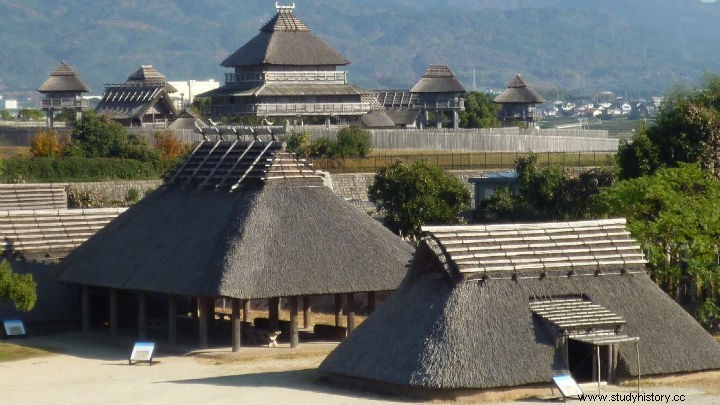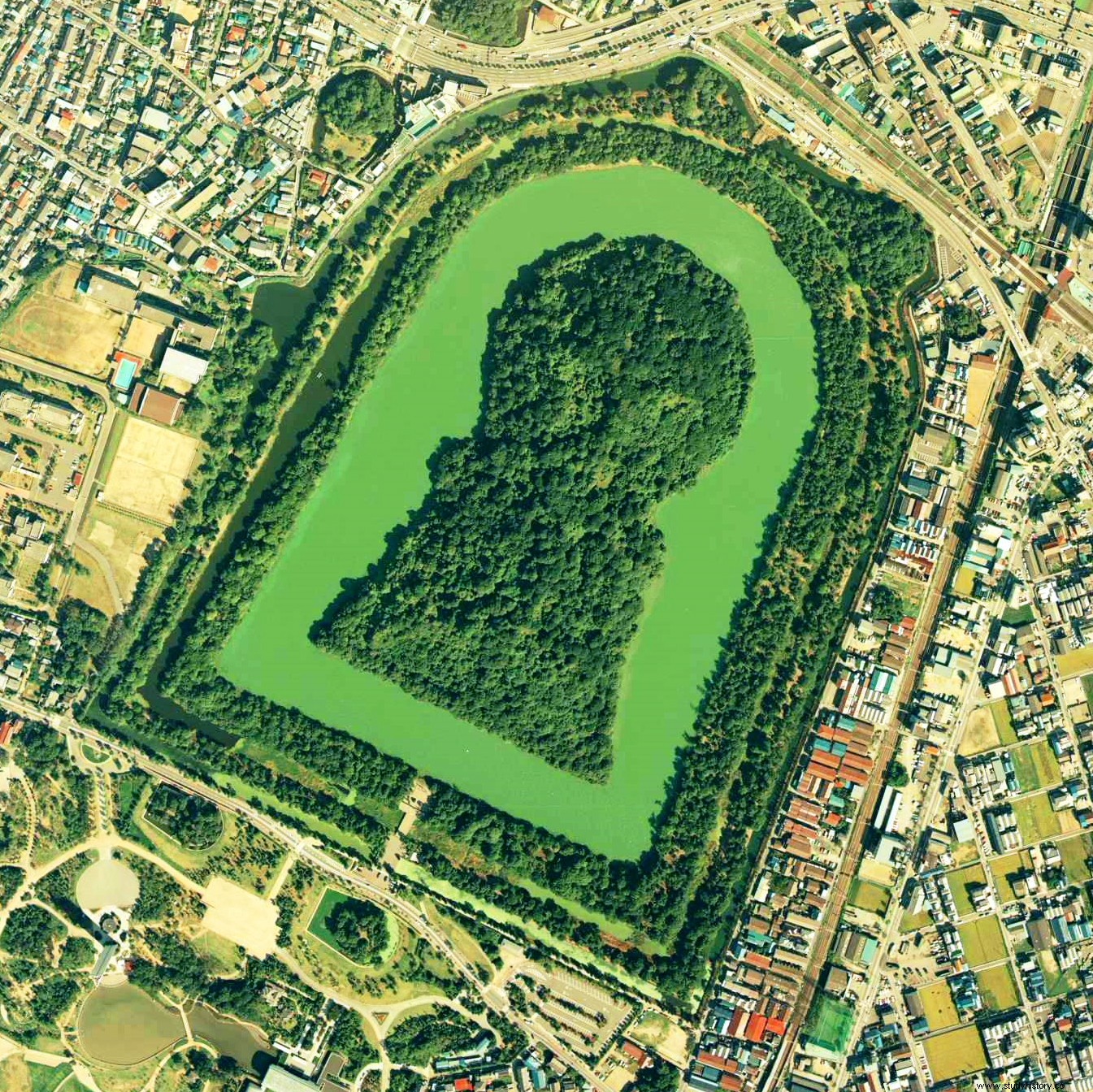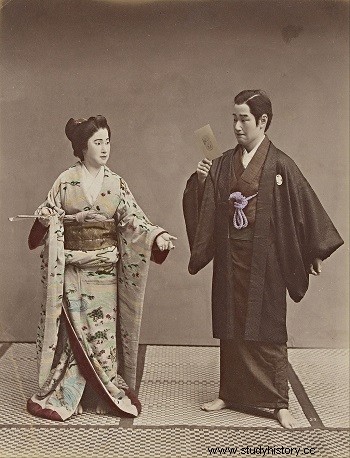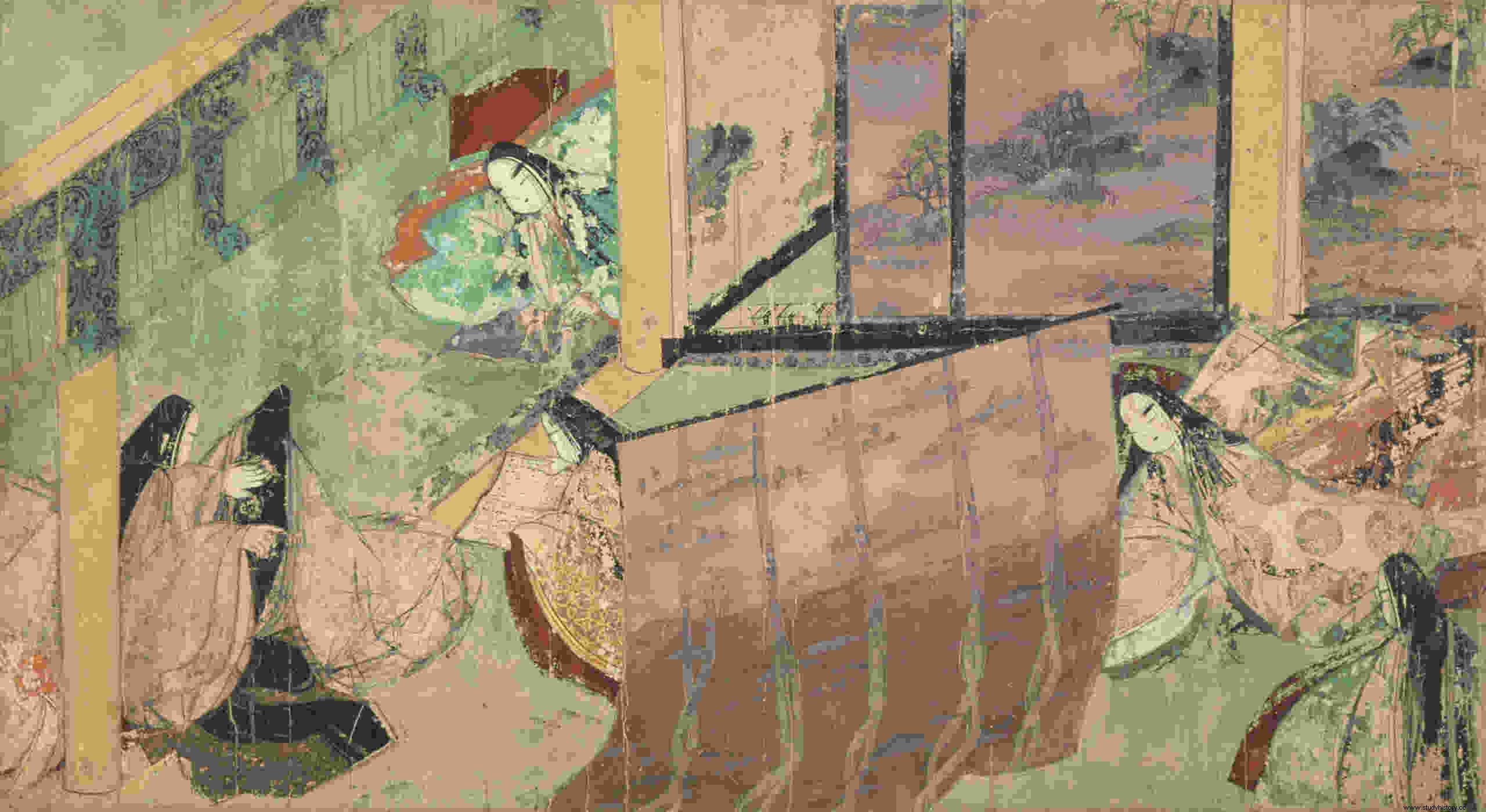Ancient Japan made significant contributions to world culture, including the Shinto religion and its engineering, unmistakable artefacts such as haniwa dolls, the most established ceramic vessels on the planet, the largest wooden structures anywhere in their development, and a variety of works of art. , including the world's most memorable book. Despite the fact that Japan was fundamentally influenced by China and Korea, the islands were never subject to foreign political control because we had to choose the minds that engaged them, adjust them as they wished, and continue with their native social practices to create a unique way of dealing. authorities, religion and artistic expression.
Historical Overview of Japan
Japan and Mythology
According to Shinto folklore, the Japanese islands were formed when the divine beings Izanami and Izanagi pounded a lance with jewels into the early sea. They also created over 800 kami or spirits, the most famous of which was the sun goddess Amaterasu, and thus the deities of Shinto, the ancient religion of ancient Japan. Amaterasu's grandson, Ninigi, became Japan's most memorable ruler, and he was the incredible grandfather of the semi-impressive Emperor Jimmu (r. 660-585 BC). As a result, a heavenly alliance was established between each resulting sovereign and divine being.
The Jomon Period

The Jomon period, which lasted about 14,500,300 to XNUMX BC, is Japan's most memorable verifiable period (although both the start and end dates for this period have been questioned). The name of the period comes from the unmistakable pottery that was delivered at that time, the world's most established vessels with simple rope-like decorations or Jomon. The presence of this stoneware marks the end of the Paleolithic age, where people now crossed lost lands from central Asia to the northern and southern Japanese islands. They then spread to the four large islands of Hokkaido, Honshu, Shikoku and Kyushu, as well as the many smaller islands that are part of Japan.
Farming first appears around 5000 BCE, and the earliest known settlement at Sannai-Maruyama dates from around 3500 BCE and continues to around 2000 BCE. The population appears to have been packed in waterfront regions and numbered somewhere in the area of 100,000 150,000 and 1250,800 individuals across the islands. Rice was found around 600 BCE, but development did not begin until around 1.52 BCE. Rice development in wet fields was first registered around 1.60 BCE. Skeletons from the time show individuals with solid shapes, wide square faces and normal levels of XNUMX m for women and XNUMX m for boys. As indicated by hereditary and cranial evidence, the Jomons are the forerunners of the ongoing Ainu minority gang.
Rituals of the Jomon Age in Ancient Japan
The most recognized form of burial in the period was in pits, which here and there were fastened with stone sections and held at least one person. Singles in containers and large pits containing up to 100 skeletons are two different types of burial. Relics from the Jomon period contain man-made dolls of mud and stone, earthenware, stone rods and gems of mud, stone and jade (dots and uprights). Paleontology has similarly revealed that Jomon fabricated stone circles, lines of stones that frame bolt shapes, and simple tall standing stones surrounded by a group of more modest stones.
The Yayoi period stretches from about 300 BC. to 250 BC, but as recently stated, the start date is pushed back as more archaic exploration revelations are made. The name comes from the rosy pottery found in Tokyo's Yayoi region, which demonstrated a movement from the Jomon period pottery. Travelers began to emerge from mainland Asia, especially the Korean landmass, around 400 BCE, no doubt due to wars caused by Chinese expansion and between rival empires. According to hereditary evidence, defeated or coordinated novices with the indigenous peoples, and brought with them new stoneware, bronze, iron and further developed metalworking procedures that led to further productive cultivation instruments as well as better weapons and body coverage.
The Yayoi Period

Towards the end of the period, Japan had made its first introductions to global relations. Wa, a confederation of small states in southern and western Japan, sent agents and recognition to the Chinese commanders in North Korea, the most important of which was Yamato. These missions are archived in the years 57 and 107 AD. Sovereign Himiko, the most famous figure of the period, was the most important Japanese ruler known for sending consulates to a Chinese territory (238, 243 and around 248 AD) (rc189-248 AD). The sovereign never succeeded and lived in a palace serviced by 1,000 ladies while administering more than 100 kingdoms.
Kofun Period

The Kofun period, which lasted from around 250 to 538 AD, was named after the huge internment slopes that were worked during that time frame. The period is sometimes referred to as the Yamato period (ca. 250-710 AD) since it was the ruling state or locality at the time, either by integrating rival districts into its space or overcoming through battles, as due by chief opponent Izumo. Yamato's exact area is unclear. However, most antiquarians agree that it was in the Nara locality. Since the fourth century AD. there has been a critical flood of individuals from the Korean nose, especially from the Baekje (Paekche) empire and the Gaya (Kaya) confederation.
Like the political connection between Korea and Japan at the time, there was undoubtedly a deluge of Korean-made products, unrefined components such as iron and social tanks brought to Japan by Korean instructors, researchers and specialists. They brought components of Chinese culture such as composition, exemplary Confucian texts, Buddhism, winding around, and the water system, as well as Korean building tanks. Envoys were also sent from China in 425 AD, 478 AD. and 11 additional times until 502 AD. Yamato Japan made a conciliatory presence on the world stage.
The huge detention slopes known as kofun, which were worked for first class under various conditions on the Korean headland, are another connection to the central area of Asia. Kofun, who filled in size in the long run, demonstrates the way Yamato rulers could order enormous values, both human and material. The Yamato tip was well on its way to creating a suitably incorporated state, administering with a mixture of power and coalitions with significant groups or Uji combined with marriages. What was required now was an overarching model of government with a very practical administrative structure, and it was to come from China.
Asuka Time

The Asuka period lasted from 538 to 710 AD. The name comes from Asuka, the capital at the time, located in northern Nara prefecture. The capital was moved to Naniwa in 645 AD, and then to Fujiwarakyo somewhere in the area of 694 and 710 AD. Sovereign Kimmie, the 29th in the top line, was the most important immovable verifiable head (instead of incredible or legendary rulers) (r. 531-539 CE to 571 CE). The most notable ruler was Prince Shotoku, who ruled until his death in 622 AD. Shotoku is credited with improving and incorporating the Chinese model government, including the formation of his seventeen article constitution, exposing humiliation and strengthening closer to China.
The next major political event in the time frame for Asuka took place in 645 AD, when Fujiwara no Kamatari, the organizer behind the Fujiwara family, arranged a coup that removed the then prevailing Soga group. The new government was rebuilt along Chinese lines in a progression of reliable change known as the Taika reforms, in which countries were nationalized, taxes were paid in kind in exchange for work, social status was renamed, regular aid selection tests were presented, regulatory codes were put together, and the director's direct authority was laid out. Kamatari was chosen as the senior priest of the emperor and was given the surname Fujiwara. This is noticeably the start of one of Japan's most impressive factions, which wanted to control the country until the twelfth century AD
Noble Family Separation
To make more opponents family gatherings, Emperor Temmu (r. 672-686 AD) separated the long royal family so that the most important direct relatives could guarantee any right to the supreme high position. Temmu chose Fujiwarakyo as the first suitable Japanese capital, complete with a Chinese-style castle and roads scattered in a normal matrix design. The acquaintance of Buddhism with Japan at some point in the sixth century AD, usually in 552 AD, was perhaps the most important advance in the Asuka period. Head Yomei formally embraced it, and Prince Shotoku, who fabricated some magnificent shrines, such as Horyuji, gave it additional energy. Buddhism was mostly invited by Japan's world class since it contributed to Japan's social status as a created country according to its strong neighbors, Korea and China.
Shotoku sent official consulates to the Sui court in China from around 607 AD. and continued until the seventh century AD. In any case, Japan's relations with its neighbors were not always pleasant. With the help of a huge Chinese Tang maritime power, the Silla kingdom overpowered its neighbor Baekje in 660 AD. An apostate Baekje force persuaded Japan to send 800 boats to help them regain control of their empire, but the united power was crushed at the Battle of Baekgang in 663 AD. The advance of the United Kingdom of Silla led to another flood of settlers from the ancient Baekje and Goguryeo kingdoms entering Japan.
Nara Period

The Nara period stretches from 710 to 794 AD. and is named because the capital was in Nara (Heijokyo) at the time and then moved to Nagaokakyo in 784 AD. The capital was based on the Chinese model Chang-an, the Tang capital, and consequently had an ordinary and obvious matrix design, as well as open structures that were natural for Chinese engineers. Heijo, a gloriously famous royal residence, was built, and the state organization was expanded to 7,000 government workers. Nara's all-out population may have reached 200,000 XNUMX by the end of the period.
An elevated military presence throughout the islands of Japan expanded the central government command over the territories, and Buddhism was further spread by Emperor Shomus (r. 724-749 AD) efforts to build a sanctuary in each territory, a scheme that expanded the tax assessment to merciless levels. Significant shrines were also built in Nara, including the Todaiji (752 AD) with its large Buddha Hall, the world's largest wooden design containing the world's largest bronze model of the Buddha. Shinto was addressed by altars such as Kasuga Taisha in the forests outside the capital (710 or 768 AD) and Fushimi Inari Taisha near Kyoto (711 AD).
Foreign missions from ancient Japan in the Nara era
Japan also proved to be more aggressive abroad, with close ties to Balhae (Parham), a state in North Korea and Manchuria. In the long run, Japan sent 13 discretionary government offices and Balhae 35 accordingly. Japan sent out materials, Balhae furs, silk and hemp fabric, and the exchange flourished. The two states wanted to attack the United Silla Empire, which currently controlled the Korean landmass, with a common armed force and a huge Japanese armada in 733 AD, but the scheme failed. So, at that time, in 762 AD, an organized attack never escaped the planning phase.
The Nara period delivered what appear to be the two most famous and significant works of Japanese writing of all time:the Kojiki and Nihon Shoki narratives, complete with creative fantasies, divine Shinto scenes, and famous family stories. The Manyoshu verse collection, Japan's first of many, was collected around 760 AD. Contrary to human expression, the total population did not flourish. Agricultural activities depended on crude oil equipment, insufficient land was ready for crops, and water system methods were lacking to prevent crop disappointments and famine flares. Thereafter, most workers favored the more remarkable safety of working for the country blue-blooded. In addition, smallpox decreased in 735 and 737 AD. the country's population by 25-35 percent, as suggested by history students.
Heian Period

The Heian period lasted from 794 to 1185 AD. and was named after the then capital, Heiankyo, now known as Kyoto. The new capital was planned on a frame. The city had a broad focus path, and engineering, similar to Nara before it, followed Chinese models, mainly for public structures. The city had blue-blooded castles, and a huge park of joy was built south of the famous royal residence (Daidairi). Except for the Shishin-nook (Audience Hall), which was burned to the ground but steadfastly modified, and the Daigoku Cave (Hall of State), which met the same result and was renewed to a more limited size at the Heian Shrine, no Heian- structures can withstand today.
Kyoto was the seat of an administration that incorporated the ruler, his high pastors, a state committee, and eight services that controlled more than 7,000,000 individuals spread across 68 areas with the assistance of a broad organization. The vast majority of Japanese individuals worked the land, either for themselves or for the homes of others. Rebellion was normal in a nation plagued by banditry and excessive tax collection. By the twelfth century AD. 50% of the land was kept in private homes (shown), and a significant part of these were excluded from paying assessment due to services or strict reasons, which caused a real mark in the state funds.
Heian-era culture in ancient Japan
Buddhism kept up with its strength, aided by scholarly priests, such as Kukai and Saicho, who brought thoughts and texts from China and outsourced the Shingon and Tendai Buddhist organizations, respectively. At the same time, Confucian and Taoist standards remained convincing in government, while old Shinto and animist beliefs remained well known among the general population. The period is associated with its social achievements, which incorporated the promotion of a Japanese composing framework (kana) in the light of Chinese characters, generally phonetically, which allowed the development of the world's most memorable novel, Tale of Genji by Murasaki Shikibu (ca. 1020 AD). NOK), as well as a few outstanding magazines (Nikki) composed by court women, including The Pillow Book by Sei Shonagon (ca. 1002 AD). The Kokinshu sonnet collection from 905 CE was another critical work.
Visual artistic creations, the hand looking at pictures and messages (e-maki), and fine calligraphy were among the visual expressions that were recorded. Painters and stone carvers were constantly awakened by Buddhism, but an even more complete Japanese methodology continually expanded the scope of the subject in execution to standard individuals and spots. A Japanese style, Yamato-e, was created in painting in particular, which is recognized in Chinese works. It is depicted by more rakish lines, the use of more radiant varieties and more remarkably beautiful features.
The Taira cleared away Fujiwara and all opponents in the long run, but in the Genpei War (1180-1185 AD) Minamoto returned triumphantly, and at the end of the conflict, the battle of Dannoura, the Taira boss, Tomamori and youthful ruler Antoku ended on the whole. The pioneer of the Minamoto family, Yoritomo, was soon after given the title of shogun by the sovereign, and his standard would introduce the medieval part of Japanese history with the Kamakura period (1185-1333 AD), otherwise known as the Kamakura Shogunate, when the Japanese government was overpowered by the military. .
Top 3 fun facts about the history of ancient Japan

Most of us know Japan for its current, fun realities with brilliant neon lights and karaoke. But would we say that we are very educated about its set of experiences? Let's get acquainted with the 3 most fascinating realities in the history of ancient Japan!
1. Japan was closed to the world for quite some time
Japan had virtually zero contact with the rest of the world for a little more than two centuries? From 1635 to 1852, there was a restriction on unknown travel due to a regulation called the Sakoku Edict. This also included unknown exchanges and some that went through all of Japan.
The law was executed on the grounds that the nation was experiencing a significantly difficult situation, especially with unknown powers. We do not want to delve into the gruesome subtleties of what happened in the days that caused this adoption of the law, but Japan experienced something of a slack with innovation as a result of this conclusion.
The US Navy kept Japan out of the conclusion in 1852, which helped the country continue to promote its special culture we currently know and love.
2. Kamakura was the fourth largest city on the planet
There is a great reality in this reality:Kamakura was really the true capital for a while, between 1185 and 1333. During these years, the city developed rapidly. The population of Kamakura exploded to 200,000 174,000, making the city the fourth largest city on the planet at that time. At the moment, Kamakura's population is around XNUMX XNUMX, which is marginally lower than how things were then. Nevertheless, it is on this grounds that this city is incredibly close to the capital Tokyo, and many decide to live in the glorious neon-lit city instead of the laid-back energies of Kamakura.
3. The first Japanese novel was composed by a woman
That's what's amazing, despite the strict guidelines for ladies and orienteering imbalances at the time in Japan, it was really a lady who composed the main novel. Not the primary Japanese novel, but still the world's most memorable book. In the year 1010, the original was called The Tale of Genji (・ ・ Genji Monogatari) composed by the pseudonym Murasaki Shikibu. Her real name is unclear until today. The creator was naturally introduced to a less powerful part of the Fujiwara family. She also served Empress Joto-mon'in in the court of Emperor Ichijo.
A brief summary of the book:it follows the heartfelt obligations of a child with a make-up head and a low-lying mistress. This was set during the Heian period in Kyoto. It resembles the Japanese form of Romeo and Juliet, with a pair of waka sonnets meshed into the story.
